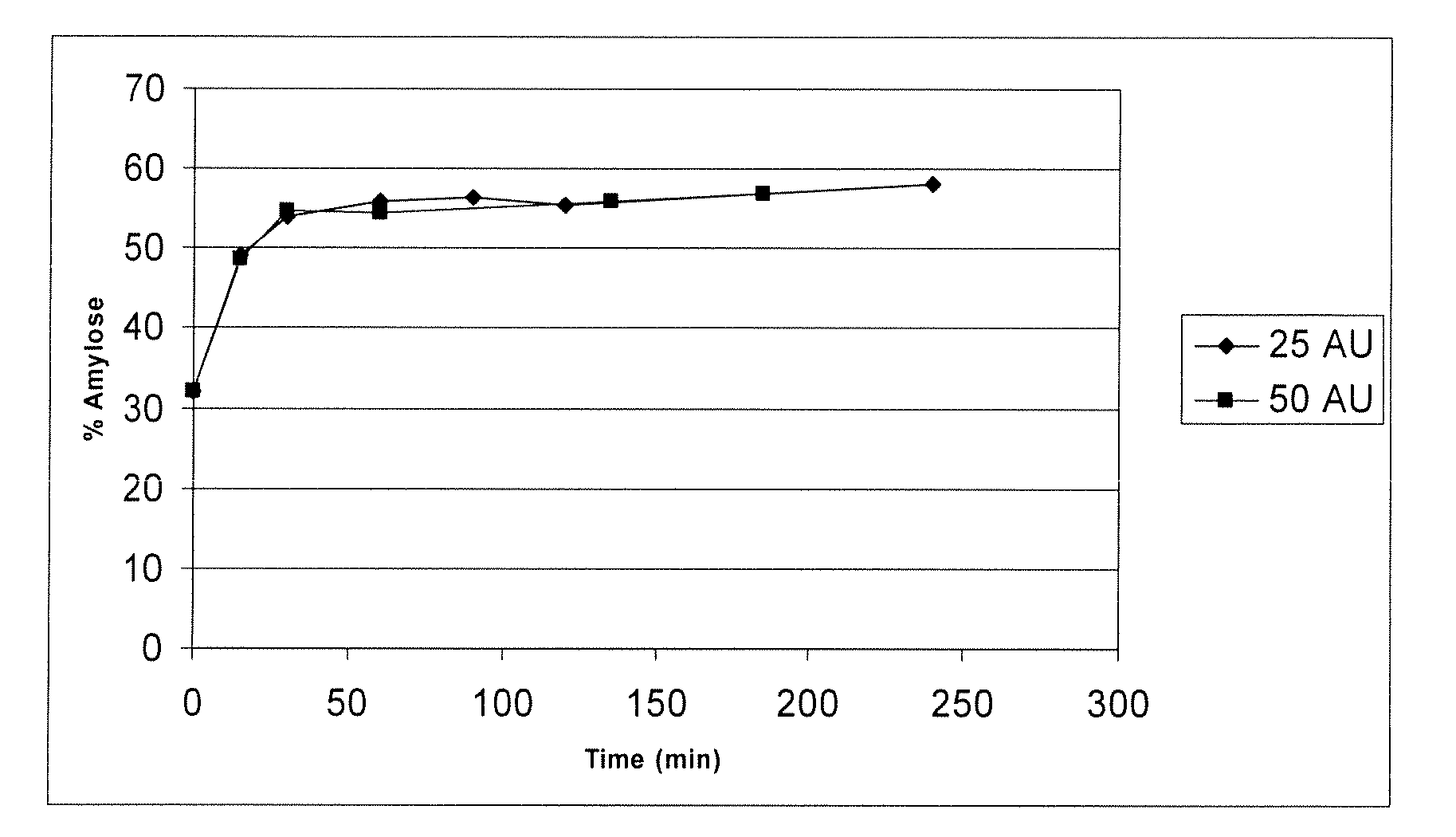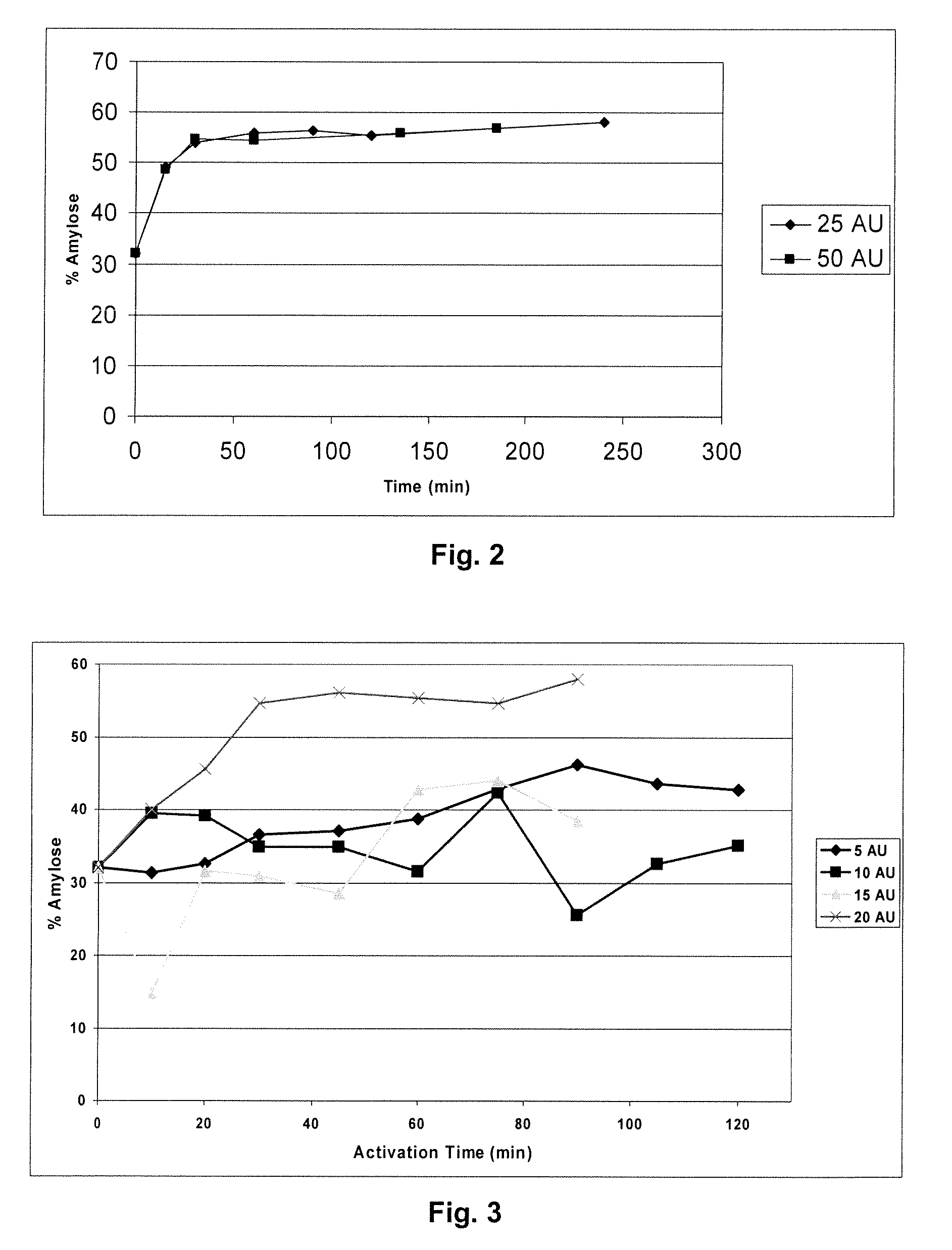Thermoplastic Starch Formed from an Enzymatically Debranched Starch
a technology of thermoplastic starch and enzymatic debranched starch, which is applied in the field of thermoplastic starch formed from, can solve the problems of lack of mechanical strength, ductility and toughness for many applications, and the conventional thermoplastic starch exhibits processing problems
- Summary
- Abstract
- Description
- Claims
- Application Information
AI Technical Summary
Benefits of technology
Problems solved by technology
Method used
Image
Examples
example 1
[0053]Native corn starch (obtained from Cargill Inc. of Minneapolis, Minn.) was debranched using a pullulanase enzyme. The pullulanase was Multifect® 1000 U / mL (lot#1680679631) and was acquired from Genencor International (Rochester, N.Y.). A round bottom glass vessel from Wilmad-LabGlass (Buena, N.J.) was initially filled with 500 milliliters of tap water and placed in a heating mantle. A RW20DZM stirring apparatus from IKA Labortechnik (Staufen, Germany) was used to agitate the suspension. An Optichem® temperature probe and heat controller from Chemglass (Vineland, N.J.) was connected to a heating pad from Glass Col® (Terre Haute, Ind.) to maintain the desired temperature throughout the experiment. The temperature probe was placed in the water and the heating knob was set to 68° C. (resulted in a water temperature of 70° C.). While heating and stirring, the native corn starch was slowly added to achieve a 10 wt. % solution. The mixture was continuously stirred at approximately 68°...
example 2
[0055]A starch / pullulanase solution was formed as substantially described in Example 1, except that 140 grams of native starch and 700 grams of water were employed to result in a 20 wt. % solution in relation to amount water. The reaction time was 1 hour. In this particular example, however, the propeller used to stir the solution was too small and the starch formed large globs of polymer that did not dissolve. In the second experiment, a 10 wt. % solution was prepared and a larger propeller was used, resulting in a homogenous starch suspension. Therefore, the 10 wt. % solution was used in the rest of the examples.
example 3
[0056]A starch / pullulanase solution was formed as substantially described in Example 1, except that a water temperature of 90° C. was employed rather than 70° C. The reaction time was 1 hour. In this particular example, the higher temperature caused the start to over-gelatinize, which made it difficult to stir the solution.
PUM
| Property | Measurement | Unit |
|---|---|---|
| temperature | aaaaa | aaaaa |
| wt. % | aaaaa | aaaaa |
| wt. % | aaaaa | aaaaa |
Abstract
Description
Claims
Application Information
 Login to View More
Login to View More - R&D
- Intellectual Property
- Life Sciences
- Materials
- Tech Scout
- Unparalleled Data Quality
- Higher Quality Content
- 60% Fewer Hallucinations
Browse by: Latest US Patents, China's latest patents, Technical Efficacy Thesaurus, Application Domain, Technology Topic, Popular Technical Reports.
© 2025 PatSnap. All rights reserved.Legal|Privacy policy|Modern Slavery Act Transparency Statement|Sitemap|About US| Contact US: help@patsnap.com



